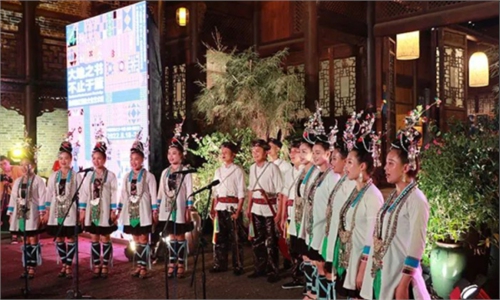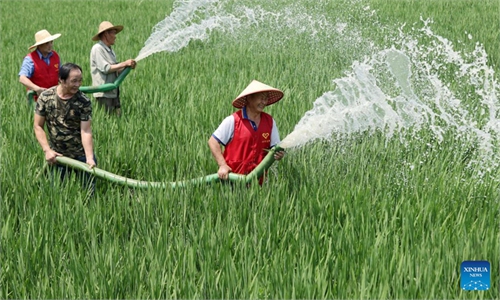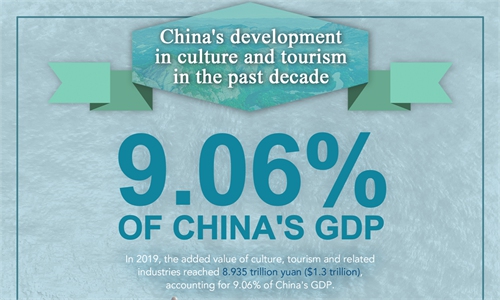ARTS / ART
With help of films and TV series, traditional Chinese earthen buildings inspire modern society
Stepping out from the background
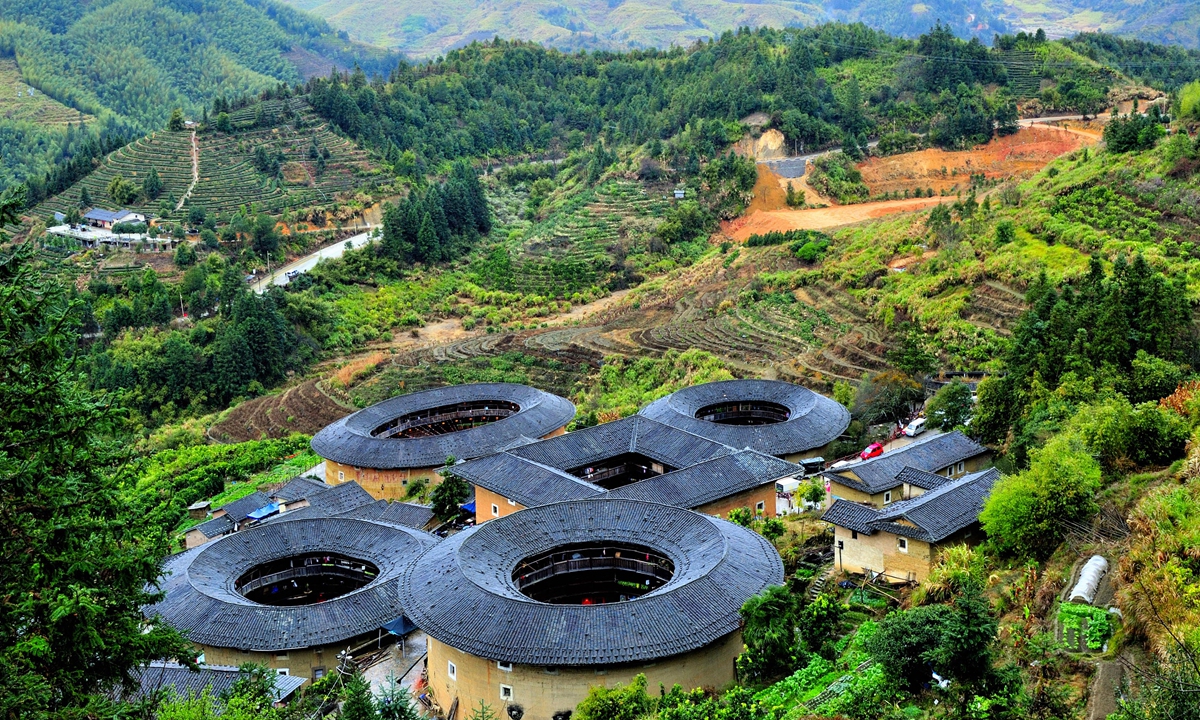
A tulou in Fujian Province Photo: VCG
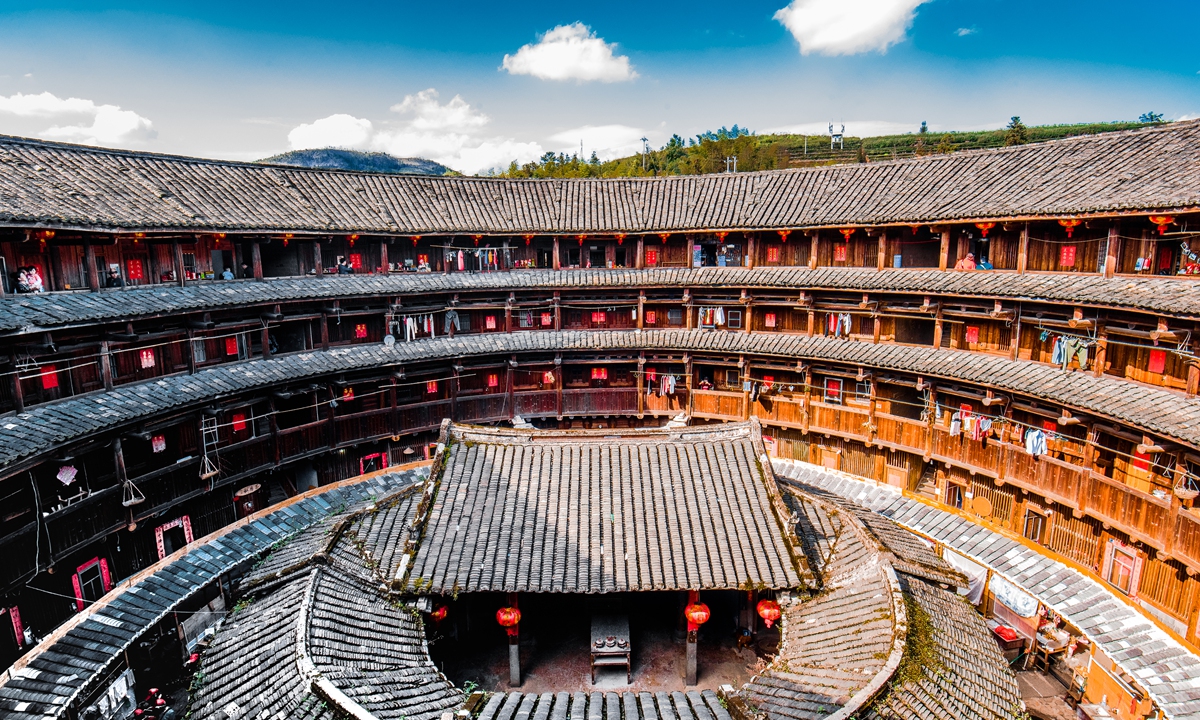
The interior of a tulou in Fujian Province Photo: VCG
Editor's Note:Carrying the genes and spirit of a nation, cultural relics and heritages are irreplaceable resources for a thriving civilization. A huge number of Chinese relics have become more popular over the past 10 years and allowed people from around the world to get to know Chinese culture better. The Global Times will feature a number of these "star" artifacts in this series, to make cultural relics stored in museums, heritages displayed throughout the vast land and texts written in ancient books come alive.
As Chinese President Xi Jinping has said, Chinese civilization, together with the colorful civilizations of other countries, should provide mankind with proper spiritual guidance and a strong spiritual impetus.
Today we examine the Fujian tulou (lit: Fujian earthen buildings), a property of 46 buildings that was inscribed by UNESCO in 2008 as a World Heritage Site, to explore how it has been integrated into modern society.
In period films and TV dramas, traditional buildings are necessary to immerse audiences into the story, but these buildings and architectural designs from different dynasties or regions are more than just background settings, they are also cultural treasures that have been finding new life in modern society due to their appearances on screen.
Tulou, a traditional Chinese dwelling unique to the Hakka people living in the mountainous areas in East China's Fujian Province and South China's Guangdong Province, is one representative of traditional architecture that has been benefiting from movies and TV dramas.
The Chinese 2016 animated epic fantasy film Big Fish & Begonia and the 2020 Mulan, a US fantasy action film produced by Disney, are two movies that feature tulou as a main settings. Talking about the reasoning behind his decision, director of Big Fish & Begonia Liang Xuan said that they took a fancy to tulou's sense of mystery and how it invoked the feel of simple rural life.
Since the films hit the big screen, more tourists have been heading to the Fujian Tulou sites to see their beauty for themselves. One scenic spot in Fujian called Yunshuiyao was welcoming more than 4 million tourists annually before the pandemic.
These traditional buildings have also caught the attention of artists, many of whom have been lending a hand to promote these ancient dwellings and help integrate them into modern society.
Fan Yu, an urban architect, told the Global Times that tulou's "raw earth" touch represents a sincerity that has inspired modern architects such as Wang Shu, the designer of the Hangzhou branch of China's National Archives of Publications and Culture, to use local materials in their buildings in keeping with the Asian ethos of respecting nature and traditional culture.
Shining on the screen
Tulou, or earthen building, is a traditional communal residence of the Hakka people, a sub-group of the Han ethnic group. Occupied by clan groups, tulou are usually large circular castle-like buildings that surround a central shrine.
The tulou of Fujian is known for its unique shape, large size and ingenious design. There are more than 20,000 tulou in southern Fujian.
Looking like a large cluster of blooming flowers when seen from above, tulou easily grabs the attention of viewers when they appear on screen.
Although Disney's use of tulou in the live action Mulan adaptation as the main character's home was far from historically accurate, the charm of the buildings seen in the film was undeniable. Like in the film, almost everyone who resides in the same tulou are from the same clan. Living day to day in these huge buildings, residents can see neighbors and elderly folk they have known their whole lives.
These scenes reflecting traditional Chinese family culture warmed the hearts of many moviegoers.
Other traditional architecture, including grand courtyards in North China's Shanxi Province, Beijing courtyards, dwellings in the lower reaches of the Yangtze River and stilt buildings in western Sichuan Province have become more familiar to audiences through appearances in films such as the US animated Kung Fu Panda franchise.
Ancient wisdom
"Tulou inspires modern architecture because it exemplifies the idea of 'people's architecture,' strengthening relationships between people," Guo Long, an architect and expert on the modernization of ancient Chinese building designs, told the Global Times.
Tulou is the inspiration for China's leading architecture firm Urbanus's Six Floors project, a 220-apartment collective housing complex for low income families in Guangzhou, Guangdong Province.
Inheriting tulou's round multistory design, the new urban "tulou" has facilities such as a basketball court, shops and community library to better cater to people's modern lives.
"Traditional tulou inspires today's designers to think about how to enhance a sense of community through architecture. It is exactly what we miss out on in high-speed city life," Guo noted.
Lin Rigeng - the owner of China's most "artistic" tulou, the Zhencheng building in Yongding county, Fujian Province - told the Global Times that Chinese philosophical beauty is hidden the tulou's design.
First built more than 100 years ago, the Zhencheng tulou's configuration is based around bagua, a set of eight symbols used in Taoist cosmology to understand the world and one of the principal tools in fengshui.
"Some online reports say our tulou was built using materials such as sticky rice. This is not true. It was build using ordinary dirt, which shows the earnest and hardworking personality of we the Hakka people," Lin noted.
